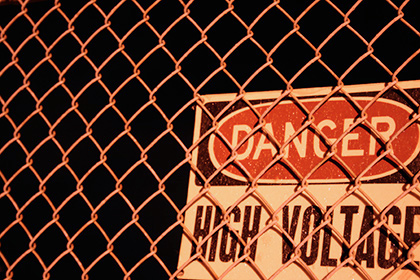The airwaves and social media were rife with Sydney commuter complaints on Thursday August 22, when a blackout caused a cascade of chaos across the city.
Sydney drivers know the gridlock a minor traffic incident can cause on the M5. Imagine their dismay when the M5 Tunnel was shut down, during peak hour, by blackout. How could a piece of major transport infrastructure not have back-up power?
It wasn’t just the M5 that was affected however, but traffic lights, the train network and about 60,000 homes powered by the Canterbury substation.
The Incident
An employee of the power supplier Ausgrid was working at the Canterbury substation, as part of an upgrade to the substation, when the power went out.
Residents and businesses in an area spanning Petersham to South Strathfield to Belmore to Earlwood lost power. That 60,000 homes were plunged into darkness, and businesses nearing the day’s close were left without power is crisis enough, but the repercussions of power being lost to major transport infrastructure were felt across the city.
Traffic lights in the area went out. The rail network on the Inner West line and then between Sydenham and Bankstown were shut down on the cusp of commuter peak hour. Some of those train commuters were lucky enough to board buses only to find themselves stuck in a traffic gridlock due to lights being out at major intersections.
Possibly the worst of the traffic drama was experienced by those motorists about to enter, or already inside, the M5 Tunnel. The lights in the tunnel went out and the boom gates at the entrance came down.
Despite the power being restored within an hour, the motorists at the tunnel had to wait longer because the electrical systems needed to be rebooted before the tunnel could reopen. The rebooting was a process which delayed motorists for a further 40 minutes.
The Blackout That Couldn’t Happen
In the wash-up after the event the Roads Minister described the blackout as a situation ‘they were told could never happen’.
There was no contingency planning to cope with an event where power to trains, lights and a tunnel were lost simultaneously. One thing is clear from the incident, Sydney planning needs to begin again and find a fail-safe option including backup power for critical infrastructure.
A spokesperson from Ausgrid indicated that the power shutdown was necessary to avoid major damage to the network. Damage that may have taken days to fix. This is cold comfort to the many homes, businesses and commuters who were left stranded or without power.
The Ausgrid website indicates that equipment is being upgraded to “enable Ausgrid to maintain a safe and reliable power supply”. An outcome that can’t come soon enough for those unfortunate to have been caught in the chaos.
Preparing For Power Outage
Many Sydney householders are unprepared to cope with blackout. This incident was short in duration, but, as indicated by Ausgrid, if the network had not been shut down major damage could have occurred leaving homes without power for days.
So here at Everest Electrical we believe it is important that every household is prepared for power failure, particularly our wonderful clients on Sydney’s Northern Beaches.
The first step to preparing an emergency plan to cope in a power outage is to have an easily accessible torch and battery-powered radio. Torches are preferable to candles in a power outage because candles can pose a serious fire hazard and are more likely to be knocked over, or left unattended, in the dark of a blackout.
The second check is to switch off appliances and electrical equipment. It is also useful to have an alternative cooking and heating facility in case you are faced with a long power outage.
When you have access to light, and news updates via battery powered radio, it is time to contact your local electricity supplier to advise of the outage. It is also important to have a list of contacts available and at the ready, in such an emergency, including contact details for any frail or elderly neighbours (so you can check that they are OK) and numbers for emergency services.
If you have a medical condition that requires uninterrupted power supply (UPS), such as being on life support or dialysis, it is essential that your electricity supplier knows about this. In the event of blackout, your supplier will contact you, so an important part of your emergency plan should be to check that they have your current and correct contact names and numbers.
The Ausgrid upgrade at the centre of the blackout is scheduled for completion next year. In the interim it is expected that NSW planning will investigate adequate contingency plans to avoid a repeat of recent events.
The event is a timely reminder for everyone to prepare or update their emergency plan to cope with a crisis, particularly power outage.


